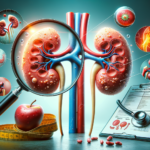Introduction to Plumbing: The Backbone of Modern Living
Plumbing is an essential aspect of modern living, providing the infrastructure for clean water supply and waste management. Its importance cannot be overstated, as it directly impacts public health, sanitation, and the overall quality of life. By understanding plumbing, we gain insight into a system that supports daily activities such as cooking, cleaning, and personal hygiene. This article will explore the various components of plumbing, its historical significance, and its role in sustainable living.
The Historical Evolution of Plumbing
The history of plumbing dates back to ancient civilizations, where the earliest systems were developed to manage water supply and sanitation. The Romans, for instance, are renowned for their sophisticated aqueducts and sewer systems, which laid the groundwork for modern plumbing. Over time, plumbing has evolved from rudimentary clay pipes to advanced systems utilizing copper, PVC, and stainless steel. This evolution reflects the growing understanding of hygiene and the technological advancements that have shaped the world we live in today.
Throughout history, plumbing innovations have played a crucial role in urban development and public health. The introduction of indoor plumbing in the 19th century marked a significant milestone, improving living conditions and reducing the spread of diseases. As we continue to advance, plumbing remains a cornerstone of infrastructure, adapting to meet the demands of an ever-growing population.
Key Components of a Plumbing System
A typical plumbing system consists of several key components that work together to ensure efficient water distribution and waste management. These components include:
- Pipes and Fittings: Essential for transporting water and waste, pipes come in various materials such as copper, PVC, and PEX. Fittings connect these pipes, allowing for changes in direction and diameter.
- Valves: These control the flow of water within the system, enabling users to shut off water supply during maintenance or emergencies.
- Fixtures: Common fixtures include sinks, toilets, showers, and bathtubs, which facilitate water usage in homes and buildings.
- Drainage System: This component is responsible for removing wastewater from the premises, ensuring sanitation and preventing water damage.
Understanding these components is crucial for maintaining a functional plumbing system, as it allows homeowners and professionals to identify and address issues effectively.
The Role of Plumbing in Sustainable Living
In recent years, the focus on sustainability has extended to plumbing, with innovations aimed at reducing water consumption and minimizing environmental impact. Water-efficient fixtures, such as low-flow toilets and faucets, are becoming increasingly popular, helping to conserve water without sacrificing performance. Additionally, the use of greywater systems, which recycle water from sinks and showers for irrigation, is gaining traction as a sustainable practice.
Plumbing also plays a vital role in energy conservation. By insulating pipes and utilizing energy-efficient water heaters, households can significantly reduce energy consumption and lower utility bills. These advancements not only benefit the environment but also contribute to long-term cost savings for homeowners.
Conclusion: Embracing the Future of Plumbing
As we look to the future, plumbing will continue to evolve, embracing new technologies and practices that prioritize efficiency and sustainability. By understanding the importance and components of plumbing, we can better appreciate its role in our daily lives and make informed decisions about maintaining and improving our systems. Whether through adopting water-saving fixtures or exploring renewable energy options, the future of plumbing holds the promise of a more sustainable and efficient world.






